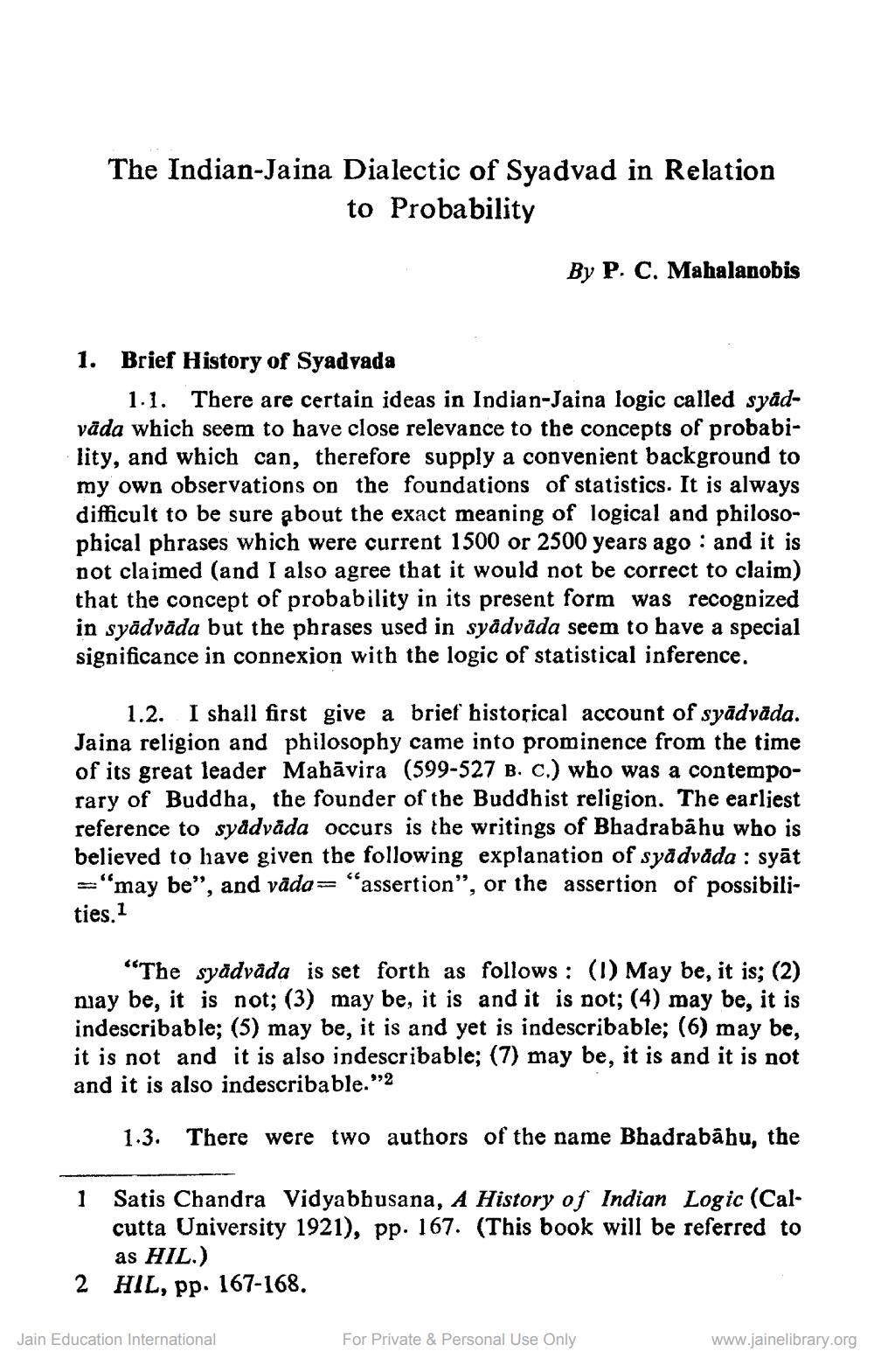________________
The Indian-Jaina Dialectic of Syadvad in Relation
to Probability
By P. C. Mahalanobis
1. Brief History of Syadvada
1.1. There are certain ideas in Indian-Jaina logic called syådvāda which seem to have close relevance to the concepts of probability, and which can, therefore supply a convenient background to my own observations on the foundations of statistics. It is always difficult to be sure about the exact meaning of logical and philosophical phrases which were current 1500 or 2500 years ago : and it is not claimed (and I also agree that it would not be correct to claim) that the concept of probability in its present form was recognized in syādvāda but the phrases used in syådvāda seem to have a special significance in connexion with the logic of statistical inference.
1.2. I shall first give a brief historical account of syādvāda. Jaina religion and philosophy came into prominence from the time of its great leader Mabāvira (599-527 B. c.) who was a contemporary of Buddha, the founder of the Buddhist religion. The earliest reference to syådvåda occurs is the writings of Bhadrabahu who is believed to have given the following explanation of syadväda : syāt ="may be", and vāda= "assertion", or the assertion of possibilities. 1
"The syädvāda is set forth as follows: (1) May be, it is; (2) niay be, it is not; (3) may be, it is and it is not; (4) may be, it is indescribable; (5) may be, it is and yet is indescribable; (6) may be, it is not and it is also indescribable; (7) may be, it is and it is not and it is also indescribable."2
1.3. There were two authors of the name Bhadrababu, the
1 Satis Chandra Vidyabhusana, A History of Indian Logic (Cal
cutta University 1921), pp. 167. (This book will be referred to
as HIL.) 2 HIL, pp. 167-168.
Jain Education International
For Private & Personal Use Only
www.jainelibrary.org




